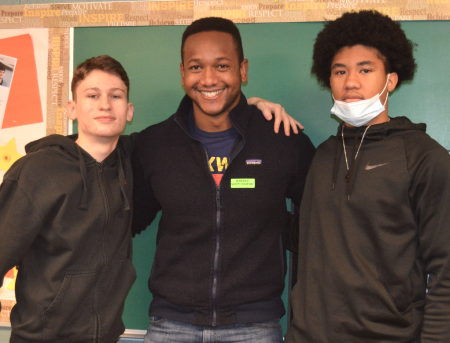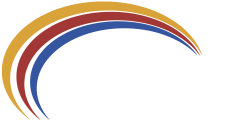
Our program has always focused on the empowerment of our students. While our impact has been significant, we are aware that the challenges our students face are constantly changing and that we need to respond accordingly.
With 90 percent of our students being people of color and 75 percent coming from low-income homes, the issues of diversity, equity, and inclusion are more prevalent in our program than ever before. We know our students are dealing with this now and that they will certainly have to deal with it as they pursue their career interests. We also know that the toll of dealing with these issues combined with the COVID-related challenges they faced over the previous two years has been emotionally exhausting.
To address these issues and better support our students’ needs, our team evaluated our curriculum and designed new strategies for the 2022-23 school year. We revamped our use of asset-based language, increased our use of social and emotional learning (SEL), improved our diversity, equity, and inclusion (DEI) content, and implemented year 6 of our 7-year Workforce Prep program.
Since 2007, three independent research teams from Saginaw Valley State University and the University of Michigan studied our program and its impact. They found that our Workforce Prep program has a statistically significant impact on students and deemed the program evidence-based. In 2020, the University of Michigan Youth Policy Lab found that our program has an equitable impact for all students, regardless of race, economic level, or gender, and a greater impact on students who were not initially college bound.
“Though our program’s success is supported by evidence and designed based on workforce competencies, SEL, asset-language, and equity concepts,” said President and CEO, Kris Marshall. “We knew it could be better. We owe it to our students to be more direct in these areas and to help them develop the skills they will need to overcome the obstacles they will inevitably face. Ultimately, this will lead them to succeed in their careers and feel good about who they are.”
Bryan Howard, our director of programs, was a critical force in leading this effort. Bryan participated in the Foundations and Equality program ran by Michigan College Access Network and San Diego State University where he learned how to create equity and inclusion in classrooms and higher education. With this training, he led our team in developing related strategies that will strengthen our program, giving underserved students improved opportunities to be successful and realize different manifestations of success.
When asked about the use of asset-based language Bryan said, “It is the intentional use of empowering phrases. Instead of saying, ‘you’re likely to struggle’ we’re now saying, ‘if you struggle.’ It takes the negative tone off the statement and helps the student feel like they can move forward from their circumstances.”
Kris added that asset-based language can encourage a student’s confidence. “We can stop self-limiting beliefs, encourage students to follow their dreams, and tell them it’s okay to see themselves in a life they did not think was possible.”
Though these ideals have worked for other organizations, we won’t know immediately how they will affect our students. Here is how Bryan will define the success of these changes. “I’ll know these strategies were truly successful if in 10 years our alumni are employed in a career they love and are impacting their community by helping those who are coming behind them.”
Kimberly Marsh, our program facilitator, took training courses to learn more about social and emotional learning and how to incorporate it into our program. She said, “It is the process of which people acquire and effectively apply the knowledge, attitude, and skills necessary to understand and manage emotions, set and achieve positive goals, feel and show empathy for others, and display responsible decision making.” This type of learning helps improve the soft skills that are usually overlooked in academic environments.
Kimberly’s background in childhood development gave more depth to the importance of the environment we create for our students. “We are taking care of the whole child,” said Kimberly. The child is in the center and their ecosystem is their family, school, community, and partnerships. We rally together with wrap-around services for the betterment of the child, and our piece is critical.”
All students benefit from incorporating DEI into the way our program is implemented and taught, and they gain skills in the process. The intention is to move away from highlighting the ideals of DEI and moving toward implementing the actions that support it.
To help us to enhance our DEI efforts, we worked with Gary Abernathy, vice president and diversity, equity, and inclusion practice leader at Marsh McClennan Agency, a previous career mentor in our Workforce Prep program, and a current advisory board member.
“Talking about diversity, equity, and inclusion is crucial. Students don’t just come to school to learn a curriculum. What they learn and experience in school lays the foundation for their professional and social life,” said Gary, “With these enhancements, Winning Futures is meeting the needs of our students in other ways that organizations have not begun to think about.”
Our classroom materials now include different perspectives, role-playing activities that allow expression and understanding of other cultures, ethnicities, and perspectives, and more inclusive language. We’re creating safe spaces where students can openly discuss how discrimination affects them, and directly addresses what to do if they: face discrimination at school or work, see it happening to someone else, or realize they are discriminating against others.
The changes in our program extend past the students; these updates were also incorporated into our career mentor and staff trainings because they all tie in together, and Gary has been a large part of that.
As we continue to evolve our curriculum, we’re also phasing in year 6 of our 7-year Workforce Prep program. We have cohorts of students involved in every level from tenth grade through their third year of college or trade school. It has been inspiring to see how these students have developed and witnessed all they have overcome in the last few years! And it will be exciting to see how they respond to our enhanced curriculum.
Learn more about our Workforce Prep program and curriculum updates.




